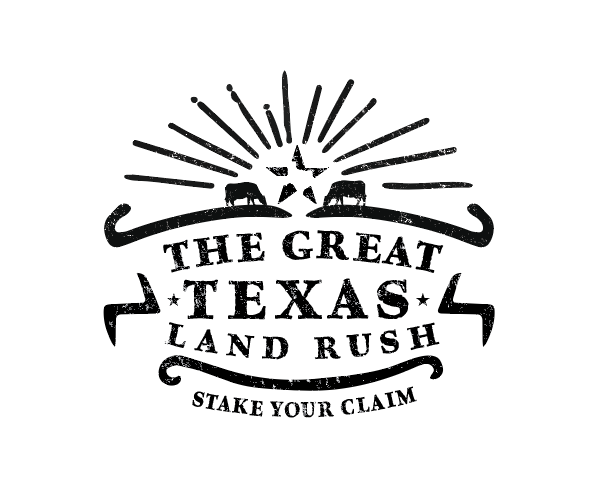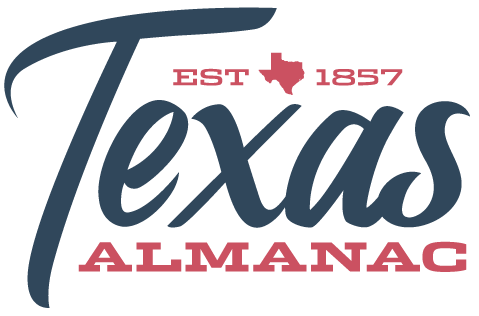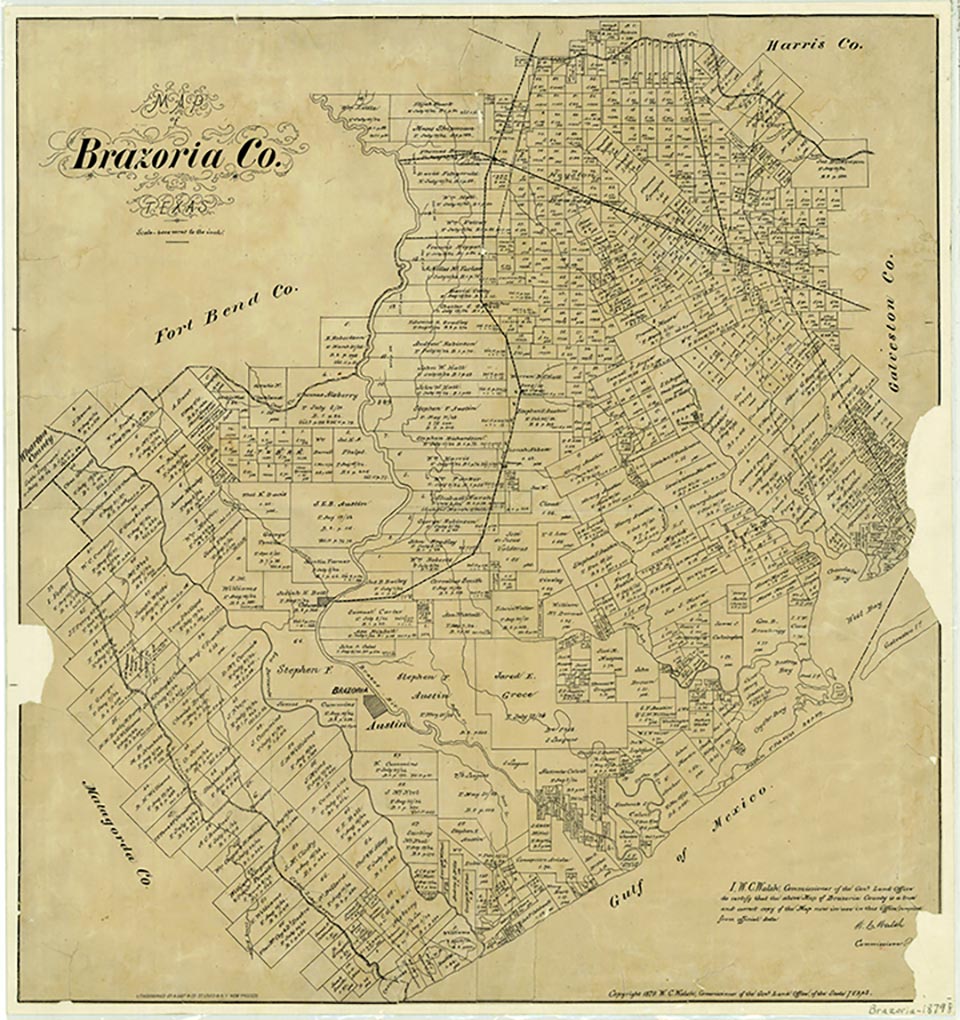Sweeny
Sweeny, also known as Adamston, is on Farm roads 1459 and 524 and the Missouri Pacific Railroad twenty miles southwest of Angleton in west central Brazoria County. Imla Keep, a doctor and one of Stephen F. Austin's Old Three Hundred colonists, serving as a business agent, came to Texas with the Groce family and received title on July 24, 1824, to a league and labor of land that included the site of Sweeny. Keep eventually returned to Louisiana, and Martin Varner acquired the land. According to various sources, the town was named for the family of John Sweeny, who arrived from Tennessee with family members and 250 slaves in 1833. Sweeny came after his sons, William Burrell and Thomas Jefferson Sweeny, purchased land grants near the townsite for the price of a load of mules and came to look at their holdings in 1831. John Sweeny settled nearby, and in 1835 purchased the Imla Keep League from Martin Varner and built a house there. The original Sweeny home, marked by a Texas Historical Society medallion, was still occupied by a descendant of the Sweeny family in 1991. MaGrew Plantation was named for the husband of Sweeny's daughter Sophia, who married overseer John MaGrew (also spelled McGrew). Later William Sweeny purchased the land from Sophia's heirs and resold it to the St. Louis, Brownsville and Mexico Railway. The original town stood in a forest of hardwoods with soil twenty feet deep. Sweeny was known briefly as Adamston when the St. Louis, Brownsville and Mexico reached the area in 1905 and laid a side track lined with gardens to the community. A post office was established in 1895, closed in 1897, and was reestablished in 1909 as Sweeny. Sweeny's cotton gin and general store were built by 1908, a school was organized in 1911 with eleven students, and church services were held in 1912, when a Civic Club was founded to promote civic and social improvements. Around 1910 the R. D. McDonald Bernard River Land Development Company, which later gave a plot of land to each church denomination, purchased acreage in the area, cut it into lots, and sold it. Burton D. Hurd, whose Burton D. Hurd Industrial Land Company promoted ten-acre suburban garden farms with "Soil Richer Than the Valley of the River Nile" to prospective settlers, platted the townsite in 1911. By 1914 the community had a hotel, a flour mill, three general stores, a cotton gin, a gristmill, a sawmill, and a population of 200. In the 1920s Sweeny shipped cotton, vegetables, live-oak parts for ships, and, for a time, bullfrogs raised by area farmers. In 1918 it had a brick factory and an orange orchard. Sweeny had an independent school system by 1912; school enrollment reached 236 by 1927, and by 1937 the community had three Black schools and an all-grade White school with six teachers. The Ku Klux Klan operated briefly and held one cross-burning in the community. During the Great Depression the Home Demonstration Club, founded in 1931, canned food and furnished school lunches. Sweeny benefitted from the development of the Old Ocean oilfield, discovered in 1934. The Harrison-Abercrombie gasoline plant was built in 1938, and the town incorporated in 1945. In 1947 Phillips Petroleum purchased the government carbon black plant built at Sweeny in 1942 and local facilities for making aviation gasoline. It subsequently developed these facilities into a refinery, natural gas liquids center, and petrochemicals complex with pipelines to markets east of the Mississippi. In 1991 Pan American Petroleum Company, the North American exploration and production subsidiary of Standard Oil Company, was a major area employer with Phillips. Some residents commuted to Dow Chemical facilities in Lake Jackson. School enrollment reached 1,518 in 1957, when a new high school was completed. The town grew between 1961 and 1988, with occasional fluctuations, from a low of 3,087 and thirty-eight businesses to a high of 3,699 and sixty-two businesses. A city park was built in 1967, and a new civic center and public library, funded in part with matching funds from Phillips Petroleum, were completed in 1983. Sweeny cemetery is recognized with a State Historical Marker. The population in 1990 was 3,297. In 2000 the population was 3,624. In 2010 the population was 3,684 and in 2016 it was estimated at 3,885.
Diana J. Kleiner | © TSHA

Adapted from the official Handbook of Texas, a state encyclopedia developed by Texas State Historical Association (TSHA). It is an authoritative source of trusted historical records.

- ✅ Adoption Status:
Belongs to
Sweeny is part of or belongs to the following places:
Currently Exists
Yes
Place type
Sweeny is classified as a Town
Associated Names
- (Adamston)
- (Logan)
Location
Latitude: 29.04543660Longitude: -95.69861100
Has Post Office
Yes
Is Incorporated
Yes
Population Count, 2021 View more »
3,591

